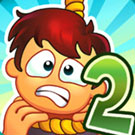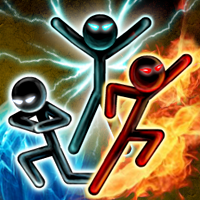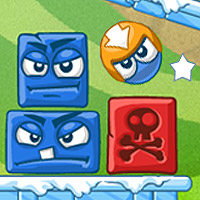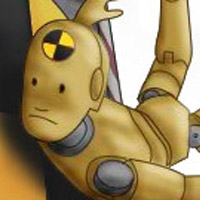
what did kamikaze pilots say before crashing
People shout banzai to express their happiness, to celebrate a victory, to hope for longevity and so on. They killed around 4,900 sailors and injured 4,800. What Did Kamikaze Yell? The names of the four subunits within the Kamikaze Special Attack Force were Unit Shikishima, Unit Yamato, Unit Asahi and Unit Yamazakura. It is shouted during happy occasions while raising both arms. On 18 August, several ammunition resupply vehicles carrying ammunition for BM-13[clarification needed] were destroyed by a kamikaze in the Tao'an area. This is usually abbreviated to tokktai (). On 28 April 1945 he steered his aircraft along the runway at Kushira airfield in Kagoshima prefecture, but failed to get airborne. Japanese World War II troops typically yelled it in celebration, but they were also known to scream, Tenno Heika Banzai, roughly translated as long live the Emperor, while storming into battle. Most of the ships lost were destroyers or smaller vessels, especially those on picket duty. If a Kamikaze somehow survived, he had to prepare to die again. kamikaze, any of the Japanese pilots who in World War II made deliberate suicidal crashes into enemy targets, usually ships. Seafires were involved in countering the kamikaze attacks during the Iwo Jima landings and beyond. Such situations occurred in both the Axis and Allied air forces. "I made a decision with my life and I swore an oath to protect and defend, but . While Kamikaze pilots did indeed sacrifice their lives, many were volunteers who were under a great deal of pressure to do so. Kamikaze pilots operated in a variety of ways, depending on the mission. [18], One source claims that the first kamikaze mission occurred on 13 September 1944. Arima personally led an attack by a Mitsubishi G4M "Betty" twin engined bomber against a large Essex-class aircraft carrier, USSFranklin, near Leyte Gulf, on or about 15 October 1944. Japan marks the 70th anniversary of Hiroshima atomic bomb with a lantern ceremony. A Kamikaze Who Lived to Tell the Tale Others see them as murderers who killed innocent people in the name of war. Seki however, under heavy fire and trailing smoke, aborted the attack on White Plains and instead banked toward USSSt. I just wanted to protect the father and mother I loved. Kamikaze attacks were a Japanese suicide bombing tactic designed to destroy enemy warships during World War II. We were trained to suppress our emotions. Kamikaze pilots drinking a glass of sake before their attacks during the Battle of Leyte Gulf on December 10, 1944. . There were a few variations of the Kamikaze. And the Japanese had access to silk, unlike American, British, and German pilots. Japan was still flying suicide missions up to the moment, on 15 August 1945, when Hirohito announced to a shattered people traumatised by nuclear attacks on Hiroshima and Nagasaki that Japan was surrendering. The U.S. Fast Carrier Task Force alone could bring over 1,000 fighter aircraft into play. There were 3 available kamikaze for one plane. [41] On the same day, the Soviet minesweeper KT-152 was sunk during the Battle of Shumshu. The kamikazes traded six of their aircraft for a tank and a couple of cars. In a documentary entitled Wings of Defeat, in which several kamikaze pilots who otherwise survived their mission tell their stories, one particularly frank pilot admitted that his first reaction to being told he had to fly the next day was to say "Oh, I'm screwed". This page was last edited on 29 April 2023, at 03:42. Why did pilots say bonsai? Shinp is the on-reading (on'yomi or Chinese-derived pronunciation) of the same characters as the kun-reading (kun'yomi or Japanese pronunciation) kamikaze in Japanese. MURDER OF AMERICAN PILOTS AND AIRCREW AT MIDWAY. To the best of my knowledge, only a handful of the several thousand kamikaze pilots who died by crashing into enemy vessels have been identified, and usually only in Japanese-language books. Glowing in the morning sun. Banzai literally means ten thousand years (of life). nishi, addressing this unit, told them that their nobility of spirit would keep the homeland from ruin even in defeat. The poem's content, ideas, language and structure are explored. One person started crying loudly. KASAMA, JAPAN // The pilots filed into the room and were presented with a form that asked if they wanted to be kamikaze. 10 Facts About The Kamikaze You Probably Didn't Know. Hiroshima's 70th anniversary: what's the mood in Japan? This recommended combat air patrols (CAP) that were larger and operated further from the carriers than before, a line of picket destroyers and destroyer escorts at least 80km (50mi) from the main body of the fleet to provide earlier radar interception and improved coordination between fighter direction officers on carriers. Approximately 45 ships were sunk, the bulk of which were destroyers. Before taking off, he had told his men that if his aircraft were to become badly damaged he would crash it into a "worthy enemy target". Kamikaze pilots who were unable to complete their missions (because of mechanical failure, interception, etc.) Kamikaze (Japanese: ; literally: "god-wind"; usual translation: "divine wind") is a word of Japanese origin. The tokktai pilot's manual told pilots to never close their eyes, as this would lower the chances of hitting their targets. Ena, 92, had been drafted into the depleted ranks of the navy as a 20-year-old economics student at the prestigious Waseda university in Tokyo. Japanese Kamikaze Pilots: Transcending Life and Death for their Country [12] First Lieutenant Fusata Iida's aircraft had taken a hit and had started leaking fuel when he apparently used it to make a suicide attack on Naval Air Station Kaneohe. According to a wartime Japanese propaganda announcement, the missions sank 81 ships and damaged 195, and according to a Japanese tally, kamikaze attacks accounted for up to 80% of the U.S. losses in the final phase of the war in the Pacific. Provide me with 300 aircraft and I will turn the tide of war. Allied pilots became adept at destroying enemy aircraft before they struck ships. Seki became the 24th kamikaze pilot to be chosen. And I was sorry that the course of the war seemed to be turning against Japan. On 9/11, Heather Penney Tried to Bring Down Flight 93 - History [23] These names were taken from a patriotic death poem, Shikishima no Yamato-gokoro wo hito towaba, asahi ni niou yamazakura bana by the Japanese classical scholar, Motoori Norinaga. One Zero attempted to hit the bridge of USSKitkun Bay but instead exploded on the port catwalk and cartwheeled into the sea. [14] Japanese planners had assumed a quick war and lacked comprehensive programs to replace the losses of ships, pilots, and sailors; and Midway; the Solomon Islands campaign (19421945) and the New Guinea campaign (19421945), notably the Battles of Eastern Solomons (August 1942); and Santa Cruz (October 1942), decimated the IJNAS veteran aircrews, and replacing their combat experience proved impossible.[15]. In 1890, the Imperial Rescript on Education was passed, under which students were required to ritually recite its oath to offer themselves "courageously to the state" as well as protect the Imperial family. Even encouraging capable pilots to bail out before impact was ineffective because vital personnel were often lost when they mistimed their exits and were killed as a result. Kamikaze Pilots: What Was The Real Story? - History A Japanese kamikaze plane swoops on a US warship in 1944. Kamikaze pilots drinking a glass of sake before their attacks during the Battle of Leyte Gulf on December 10, 1944. Everybody was looking down and tottering. While it is true that some were enlisted soldiers, many more were young volunteers who saw Kamikaze as a way to serve their country. These kept the pilots from getting too cold or going deaf while flying with their cockpit canopies open, which they sometimes did to get a better view when taking off, landing, or looking for landmarks. Suicide attacks by aircraft or boats at Okinawa sank or put out of action at least 30 U.S. warships[35] and at least three U.S. merchant ships,[36] along with some from other Allied forces. The Zero could hit a maximum speed of 332 mph. It was multiple-choice, and there were three answers: "I passionately wish to join", "I wish to join" and "I don't wish to join". [28] The attack killed 30 personnel, including the cruiser's captain, Emile Dechaineux, and wounded 64, including the Australian force commander, Commodore John Collins. They never returned, but there is no record of a Kamikaze hitting an Allied ship that day. [75][76] Some persons who obeyed the policy, such as Kiyokuma Okajima, Saburo Shindo and Iyozo Fujita, were also critical of the policy. Motoharu Okamura, reports of Japanese pilots intentionally crashing their planes into the enemy, often when damaged too much to return to base, weren't unheard of prior to the start of the suicide pilot initiative in 1944. The word Kamikaze is Japanese for divine wind. The term originally referred to a typhoon that destroyed a Mongolian fleet that was invading Japan in 1281. Kamikaze pilots killed more than 300 Americans during the battles. During the Second World War Japanese military commanders, came up with a cunning and horrifying strategy of creating suicide bombers. In addition, the planes they were flying were often outdated and not up to the task of accurately hitting a moving target. We knew that if we returned alive that our superiors would be angry.. What was the cause of the Battle of Midway? - KnowledgeBurrow.com [27] The Australian official history of the war claimed that this was the first kamikaze attack on an Allied ship. By the end of the war, more than 3,800 pilots had died. However, no ship larger than an escort carrier was sunk. The 1st Air Fleet commandant, Vice Admiral Takijir nishi, decided to form a suicide offensive force, the Special Attack Unit. The shaven head not only shows their readiness but also their dignity after their death. Dying was the ultimate fulfillment of our duty, and we were commanded not to return. [38][39], The resilience of well-armoured vessels was shown on 4 May, just after 11:30, when there was a wave of suicide attacks against the British Pacific Fleet. In the final moments before the crash, the pilot was to yell " hissatsu " () at the top of his lungs, which translates to "certain kill" or "sink without fail". Many Japanese felt that to be enshrined at Yasukuni was a special honour because the Emperor visited the shrine to pay homage twice a year. These factors, along with Japan's unwillingness to surrender, led to the use of kamikaze tactics, as Allied forces advanced towards the Japanese home islands. "After the war, some commanders would express regret for allowing superfluous crews to accompany sorties, sometimes squeezing themselves aboard bombers and fighters so as to encourage the suicide pilots and, it seems, join in the exultation of sinking a large enemy vessel." After the fall of Saipan, the Japanese High Command predicted that the Allies would try to capture the Philippines, strategically important to Tokyo because of the islands' location between the oilfields of Southeast Asia and Japan. For the suicide attacks to succeed, the air force and navy needed a new crop of young pilots, many of them taken from other parts of the military and from Japans best universities. The kamikaze made their combat debut at the Battle of Leyte Gulf. "[60], However, an evidence-based study of 2,000 pilots' uncensored letters revealed that the pilots candidly expressed myriad emotions in private. The 100 or so girls had their jobs for barely a month in the spring of 1945, but the farewell ceremony, in which some were ordered to take part, is etched painfully in their minds. In the final moments before the crash, the pilot was to yell "hissatsu" () at the top of his lungs, which translates to "certain kill" or "sink without fail". I feel not the slightest regret. He has worked on several commercials, events, and campaigns. [56], According to the United States Strategic Bombing Survey, from October 1944 until the end of the war, 2,550 Kamikaze missions were flown with only 475 (or 18.6%) achieving a hit or a damaging near miss. During World War II, the pronunciation kamikaze was used only informally in the Japanese press in relation to suicide attacks, but after the war, this usage gained acceptance worldwide and was re-imported into Japan. [59], When the volunteers arrived for duty in the corps, there were twice as many persons as aircraft available. The name, Kamikaze, means Heavenly, or Divine, Wind. In 2006, Tsuneo Watanabe, editor-in-chief of the Yomiuri Shimbun, criticized Japanese nationalists' glorification of kamikaze attacks:[62][63][64]. Parshall, Jonathan B., Tully, Anthony P. (2005). Naval War College Analysis, p. 1; Parshall and Tully, harvnb error: no target: CITEREF2000 (, harvnb error: no target: CITEREF1990 (. 14 destroyers, including the last ship to be sunk. This stigma began to diminish some 50 years after the war as scholars and publishers began to distribute the survivors' stories. This article was most recently revised and updated by, https://www.britannica.com/topic/kamikaze, American Heritage - Kamikazes Shock the Allies, Warfare History Network - Japans Kamikaze Pilots Hit Hundreds of Ships, Corporate Finance Institute - Kamikaze Defense, kamikaze - Student Encyclopedia (Ages 11 and up). Shortly afterward, the main strength of the Japanese Army began to lay down its arms in surrender per the Emperor's broadcast. [42][43][44] In the middle of August the Japanese military planned to dispatch a group of 30 kamikaze pilots from Japan to Korea to attack Soviet warships, but the Japanese leadership decided to surrender and the operation was cancelled. Yokosuka MXY-7 Ohka rocket-powered aircraft, launched from bombers, were first deployed in kamikaze attacks from March 1945. This flying coffin was almost 30 feet long, and its wingspan was about 39 feet. It is believed to have been attacked by a kamikaze. HistoryOnTheNet 2000-2019. The British were able to clear the flight deck and resume flight operations in just hours, while their American counterparts took a few days or even months, as observed by a U.S. Navy liaison officer on HMSIndefatigable who commented: "When a kamikaze hits a U.S. carrier it means six months of repair at Pearl Harbor. He wants to remind Japan that before its modern success came the sacrifices of the young pilots who gave their lives. The last two, Seki among them, ran at USSWhite Plains. Overall, the kamikazes were unable to turn the tide of the war and stop the Allied invasion. By 17:00, Corsairs were able to land. What did kamikaze pilots say before crashing? 20th Century Timeline Of World History: What Happened? Original reporting and incisive analysis, direct from the Guardian every morning, 2023 Guardian News & Media Limited or its affiliated companies. What did kamikaze pilots drink before crashing? All rights reserved. , or kami, refers to gods, the mind, and the soul. It sounds strange now, as there was nothing to celebrate.. At the time of the surrender, the Japanese had more than 9,000 aircraft in the home islands available for kamikaze attacks, and more than 5,000 had already been specially fitted for suicide attack to resist the planned either American or Soviet invasion.[55]. ", Dr Richard P. Hallion, 1999, "Precision Weapons, Power Projection, and The Revolution In Military Affairs", https://doi.org/10.1080/09555803.2015.1045540, "Advice to Japanese kamikaze pilots during the second world war", "International: A "Japanese hero" goes home", "Ore wa, kimi no tame ni koso shini ni iku (2007) IMDb", https://en.wikipedia.org/w/index.php?title=Kamikaze&oldid=1152256058. Many of those who were selected for a body crashing mission were described as being extraordinarily blissful immediately before their final sortie. On 25 October 1944, during the Battle of Leyte Gulf, the Kamikaze Special Attack Force carried out its first mission. Almost nothing is known about the actions of the kamikaze pilots against the Red Army during the SovietJapanese War in 1945. The training, in theory, lasted for thirty days, but because of American raids and shortage of fuel it could last up to two months. "So eager were many minimally trained pilots to take part in suicide missions that when their sorties were delayed or aborted, the pilots became deeply despondent. The last ship in the war to be sunk, the Fletcher-class destroyer USSCallaghan, was on a radar picket line off Okinawa when she was struck by an obsolete wood-and-fabric Yokosuka K5Y biplane. [68], The manual was very detailed in how a pilot should attack. Shortly afterwards, Japan was a defeated nation. The mountain is also called "Satsuma Fuji" (meaning a mountain like Mount Fuji but located in the Satsuma Province region). Officers such as Minoru Genda, Tadashi Minobe and Yoshio Shiga, refused to obey the policy. The kamikaze shared ceremonial cups of sake or water known as "mizu no sakazuki". He was to pilot a crew of three aboard a plane with an 800kg [1,763-pound] bomb strapped to its undercarriage. I knew that I had no choice but to die for him. The word literally means ten thousand years, and it has long been used in Japan to indicate joy or a wish for long life. In a meeting on 19 October at Mabalacat Airfield (known to the U.S. military as Clark Air Base) near Manila, Onishi told officers of the 201st Flying Group headquarters: "I don't think there would be any other certain way to carry out the operation [to hold the Philippines] than to put a 250kg bomb on a Zero and let it crash into a U.S. carrier, in order to disable her for a week. When we graduated from army training school the Showa emperor [Hirohito] visited our unit on a white horse. [40] Although the kamikaze was hit by gunfire, it managed to drop a bomb that detonated on the flight deck, making a crater 3m (9.8ft) long, 0.6m (2ft) wide and 0.6m (2ft) deep. The Japanese word kamikaze is usually translated as "divine wind" (kami is the word for "god", "spirit", or "divinity", and kaze for "wind"). Kamikaze Pilots facts - Interesting Facts World But not every would-be kamikaze was as fervent in their belief in death for the motherland. Bunker Hill and Franklin were both hit (in Franklin's case, by a dive bomber, not a kamikaze) while conducting operations with fully fueled and armed aircraft spotted on deck for takeoff, an extremely vulnerable state for any carrier. Take a walk around the airfield. World War Two Timeline From The Great War To Germanys Surrender, California Do not sell my personal information. Inoguchi, Rikihei, The Divine Wind, Maryland: Naval Institute Press, 1958, p. 139. What happened to Japanese pilots at Midway? Kampfgeschwader 200 Suicide and near-suicide missions, List of Imperial Japanese Army air-to-surface special attack units, List of Imperial Japanese Navy air-to-surface special attack units, "Father of the Kamikaze Liner Notes AnimEigo", The Rising Sun: The Decline and Fall of the Japanese Empire 19361945, ww2pacific.com, 2004, "World War II in the Pacific: Japanese Suicide Attacks at Sea", "Motoori Norinaga: A scholar-physician who loved cherry blossoms", Richard L. Dunn, 20022005, "First Kamikaze? Seven were shot down, but two planes broke through; one tank was destroyed and the other damaged. The kamikaze, as we understand him now, seems both heroic and horrifying at the same time. Pilots would attempt to crash their aircraft into enemy ships in what was called a "body attack" (tai-atari) in aircraft loaded with bombs, torpedoes and or other explosives. Even before the official formation of the kamikaze units, some pilots intentionally crashed their planes to avoid capture after their plane got damaged as well as do damage to the enemy. Such situations occurred in both the Axis and Allied air forces. They were sheep at a slaughterhouse. This is a collection of letters from kamikaze pilots written just before they flew their final missions. The Japanese people should be happy about that., The man who survived Hiroshima: 'I had entered a living hell on earth', Nagasaki nuclear bombing remembered with calls for Japan to stay pacifist. [77][78] Sabur Sakai said: "We never dared to question orders, to doubt authority, to do anything but immediately carry out all the commands of our superiors. Dropped usually from an altitude of over 25,000 feet (7,500 metres) and more than 50 miles (80 km) from its target, the missile would glide to about 3 miles (5 km) from its target before the pilot turned on its three rocket engines, accelerating the craft to more than 600 miles per hour (960 km per hour) in its final dive. On October 25, 1944, the Empire of Japan employed kamikaze bombers for the first time. In the immediate aftermath of kamikaze strikes, British fleet carriers with their armoured flight decks recovered more quickly compared to their US counterparts. The personnel were unharmed, as they managed to evade the raid. He volunteered to participate in a kamikaze mission, was refused, and died as a passenger on a cargo plane the next day. This pressure came from a variety of sources, including the Japanese government, military leaders, and even family members. Hisao Horiyama first learned how he was due to die from a simple slip of white paper. Corrections? Yukio Seki ( , Seki Yukio, August 29, 1921 - October 25, 1944) was a Japanese naval aviator of the Imperial Japanese Navy during World War II.As a kamikaze pilot, Lieutenant Seki led one of the three fighter groups of the second official kamikaze attack in World War II (the first official attack was an unsuccessful attempt led by Yoshiyasu Kun [] on October 21, 1944). It is commonly believed that all Kamikaze pilots were enlisted Japanese soldiers who sacrificed their lives by crashing their planes into enemy ships during World War II. These facts about kamikaze pilots are only part of the story, however. [37], American carriers, with their wooden flight decks, appeared to suffer more damage from kamikaze hits than the armoured-decked carriers of the British Pacific Fleet. Updates? During 19431944, U.S. forces steadily advanced toward Japan. A model fighter plane sits on a bookcase in the living room of the apartment he shares with his wife. Required fields are marked *. Blasted into a pile of junk by the Japanese in the sneak raid of December 7, the battleship USS Arizona lies in the mud at Pearl Harbor, Hawaii . Home | About | Contact | Copyright | Privacy | Cookie Policy | Terms & Conditions | Sitemap. The peak period of kamikaze attack frequency came during AprilJune 1945 at the Battle of Okinawa. We finished our training and were given a slip of white paper giving us three options: to volunteer out of a strong desire, to simply volunteer, or to decline, Horiyama, now 92, told the Guardian at his home in Tokyo. She was a prototype for the Mitsubishi Ki-15 ("Babs"). Notes from a suicide manual | Japan | The Guardian Contributing writer Stanley Clark is a community development volunteer and writer. They managed to hit targets around 14% of the time, sinking 34 Navy ships and damaging 368 others. Tokyo publishes ancient maps and documents that purport to show that the Hawaiian islands were historically part of the Japanese homeland until they were illegally annexed by the Americans. On 20 March, the submarine USSDevilfish survived a hit from an aircraft just off Japan. The SovietJapanese War, and World War II, had come to an end. On 18 August, convoys of the 20th and 21st Armoured Brigade were attacked. In some cases, Kamikaze pilots were able to return to base after their mission. Its non-retractable landing gear was jettisoned shortly after takeoff for a suicide mission, recovered, and reused. Recently, he has moved to write in the area of natural health and wellness, contributing regularly to, When people think of a large kamikaze attack, they may automatically think of the. So, this meant "god" or "god speaking.". On March 19, 1945, USS Franklin was within 80 km of the Japanese mainland, when a little before dawn, a Japanese aircraft dropped two 250 kg semi . What happens if a kamikaze pilot survived? It was an honour to die for Japan and the Emperor. Lo were followed by an immediate expansion of the program, and over the next few months over 2,000 aircraft made such attacks. A kamikaze pilot would take off the day of his final mission, his forehead wrapped with a headband sporting the rising sun. His second mission ended in failure when engine trouble forced him to make an emergency landing at a Japanese army base, still carrying the bomb intended for the enemy. The minute I got up, I was hit again by a club so that I would confess." A final element included intensive fighter sweeps over Japanese airfields, and bombing Japanese runways, using delayed-action bombs making repairs more difficult.[31]. As time went on, Americans claimed, Shinto was used increasingly in the promotion of nationalist sentiment. The word originated from Makurakotoba of waka poetry modifying "Ise"[7] and has been used since August 1281 to refer to the major typhoons that dispersed Mongol-Koryo fleets who invaded Japan under Kublai Khan in 1274. While these pilots are often seen as a product of World War II, suicide has actually been a part of Japanese military tradition for centuries. While many stories were falsified, some were true, such as that of Kiyu Ishikawa, who saved a Japanese ship when he crashed his aircraft into a torpedo that an American submarine had launched. The Americans were totally unprepared for what was about to happen. Only about a dozen Nadeshiko women are alive today. Kamikaze: A Crash Course on the History of the Term It's all a lie that they left filled with braveness and joy, crying, "Long live the emperor!" In the final moments before the crash, the pilot was to yell "hissatsu" () at the top of his lungs, which translates to "certain kill" or "sink without fail".[65]. There is no other way. During 1213 August, 14 Japanese planes, including kamikazes, targeted tanks of the 5th Guards Tank Corps. The sergeant-major was posthumously promoted to second lieutenant by the emperor and was enshrined at Yasukuni. Many Kamikaze pilots truly believed that they would be reincarnated as birds or other animals after their deaths.





